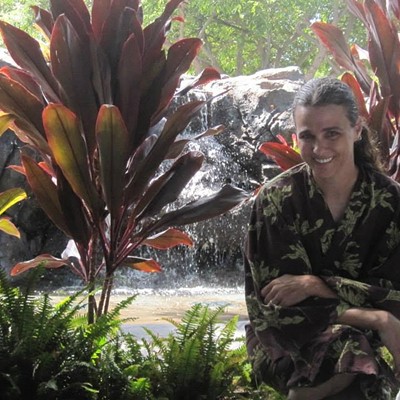The Hohokam people mysteriously disappeared in the 15th century, but glimpses into their quiet, farming-based lives can be still be seen in the middle of metropolitan Phoenix, at the Pueblo Grande Museum and Archaeological Park.
Occupying 3.24 acres just off of Washington Street and east of Sky Harbor Airport, the museum and village ruins illustrate how the Hohokam were pioneers of desert irrigation and flash food farming. In the museum theater, visitors can watch a 10 minute video that gives a quick history.
Hohokam tools, pottery, petroglyphs, and fabrics are on display in the gallery area, which includes a "Landscapes and Lifeways" exhibit featuring a gigantic Saguaro skeleton (the Hohokam used Saguaro wood in the construction of their homes). Currently, there's an exhibit on farming, which shows how the Hohokam grew cops like corn, squash, and cotton for consumption and trade.
But the main attraction at the Pueblo Grande Museum and Archaeological
Park is the remnants of the Hohokam village outside. There are various,
unrecognizable pieces of old adobe homes down in pits of dirt and
partial walls crumbling everywhere, but two large structures clearly
stand out: the "Platform Mound" and the "Ball Court."
The Platform Mound was once 30 feet wide and as long as a football
field. No one's sure exactly what it was used for, but most scholars
seem to agree the mound was the heart of the city, and could have
housed high-ranking residences and ceremonial temples.
Now, all that's
left is a giant rock plateau, scattered with dilapidated mud and rock
walls. Sometimes rooms are recognizable, like one giant room that used
to be several storage units, and it's not hard to imagine a
civilization thriving here.
To give visitors an idea of what the settlement once looked like, there
are several whole replicas of Hohokam pit houses (circa 950 AD) a short
distance from the Platform Mound. The Ball Court is just west of these
structures.
Excavated in the 1950s, the Ball Court is an oblong circle that
stretches 82 feet long and is 38 feet wide. Scholars believe the court
hosted some type of ball games that drew cheering villagers, though
they're not exactly sure what.
There are a lot of holes in Hohokam
history; the population vanished around 1450. Though
many suspect a vicious cycle of flood-and-drought or civil unrest
against Hohokam chiefs, their demise remains a mystery.
See pieces of history and mystery at the Pueblo Grande Museum,
4619 E. Washington Street, Monday through Saturday from 9 am to 4:45 pm.
Admission costs $6 for adults, $3 for children under
17. Call 602-495-0901 for more information.











